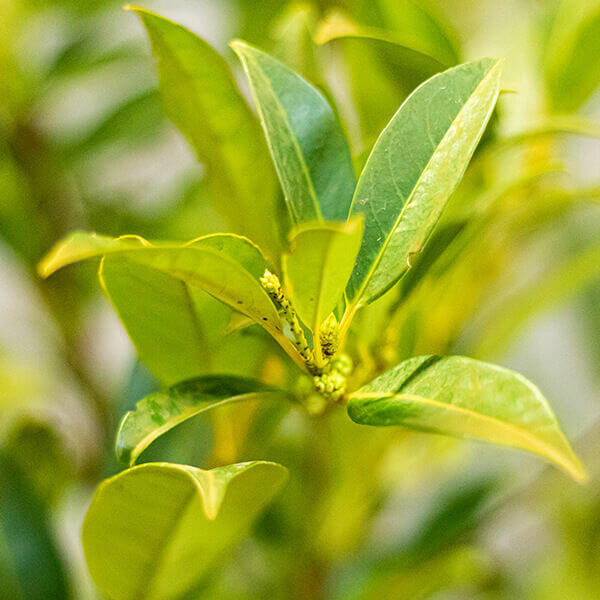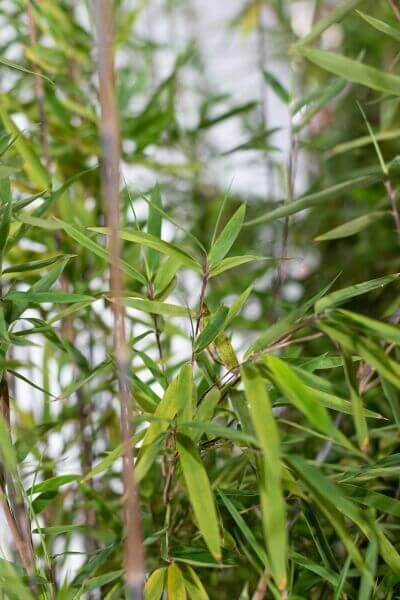Hedge Plants For Structured Gardens
Hedge Plants For Structured Gardens
Blog Article
Best Hedge Plants For Small Gardens
Boost your garden's allure with lavish hedge ranges such as Yew (Taxus), Thuja, Laurel, Photinia, and Bamboo, commemorated for their structural integrity and environmental advantages.
Yew and Thuja provide evergreen coverage and winter season strength, while Laurel provides quick growth and broad, fragrant leaves.
Photinia includes seasonal charm with its dynamic red foliage, and Bamboo provides a low-maintenance, serene ambiance.
These hedges enhance air quality, reduce noise, and produce tranquil, personal spaces.
Appropriate planting, spacing, and upkeep make sure energetic development and environmental consistency.
Explore how these rich ranges can raise your garden's appeal and well-being.
Key Takeaways
Change Your Garden With Lush Hedge Ranges
- Select Yew for its thick, evergreen development and unrivaled longevity.
- Select Laurel for its fast growth and broad leaves, guaranteeing fast personal privacy.
- Pick Photinia for its lively seasonal foliage, which turns a striking dark red.
- Make use of Bamboo for a low-maintenance, winter-hardy hedge with aesthetic appeal.
- Space plants 2-3 per meter and prune regularly for ideal growth and health.
Popular Hedge Plants
When changing a garden with rich hedge ranges, it's vital to consider popular hedge plants such as Yew, Thuja, Laurel, and Photinia due to their unique characteristics and benefits.
Yew (Taxus) is highly esteemed for its durability and thick, green development, making it a prime option for enduring landscapes.
Thuja is kept in mind for its evergreen foliage and robust winter season durability.
Photinia includes seasonal vibrancy with red leaves that darken gradually, producing dynamic visual appeal.
Laurel provides rapid growth and fragrant, broad leaves, perfect for fast privacy.
Furthermore, Bamboo is an outstanding choice for ambiance, offering a low-maintenance, winter-hardy alternative that enhances the garden's aesthetic with its sophisticated, swaying canes.
These selections deal with a range of horticultural needs and choices.
Benefits of Garden Hedges
Garden hedges provide a wide variety of benefits, making them a valuable addition to any landscape. These natural barriers are cost-efficient to carry out and provide considerable wind security, enhancing air blood circulation and adding to noise decrease. The thick foliage of hedges like Thuja and Beech guarantees privacy by blocking visibility, creating a serene and remote environment.
Hedges likewise play an important role in microclimate policy, providing a steady environment that promotes plant development and lessens temperature variations. Their elaborate leaf structures filter toxins, improving air quality and adding to a healthier garden community.
Moreover, hedges master noise decrease, soaking up and deflecting sound waves to lower ambient sound levels. This double performance of offering both visual and acoustic privacy boosts the total serenity and visual appeal of any garden.
Planting and Maintenance Tips
For a successful hedge, meticulous preparation of the planting area is crucial. Guarantee the soil has correct pH and drainage to support strong root advancement.
Area the plants appropriately for the chosen types. Water the hedge regularly during its preliminary growth stage, changing as needed with seasonal changes.
Execute a organized pest control and disease avoidance method, utilizing organic or chemical treatments when essential. Regularly inspect for aphids, mites, and fungal infections.
Apply mulch to keep wetness and reduce weeds. Seasonal pruning promotes thick development and air blood circulation, essential for plant health.
Following these guidelines will assist you cultivate a dynamic, well-maintained hedge that enhances the beauty of your garden.
Spacing and Trimming Guidelines
Spacing and Trimming Guidelines
Appropriate spacing and trimming are essential for cultivating healthy, aesthetically appealing hedges. Sufficient spacing guarantees each plant receives sufficient nutrients, light, and airflow.
Follow these guidelines for optimal hedge upkeep:
- Spacing: Position hedge plants 2-3 plants per meter to encourage robust growth.
- Pruning Techniques: Regular pruning is necessary for maintaining desired hedge height and shape. Cut brand-new development in summer season and cut down older wood throughout winter season.
- Seasonal Care: Change trimming techniques and schedules according to seasonal requirements to ensure plant health.
- Hedge Height: Frequently display and cut to preserve the preferred hedge height and accomplish uniform aesthetic appeals.
Following these steps will guarantee your hedge prospers, improving both the appeal and functionality of your garden.
Picking the Right Hedge
Picking the Right Hedge
Choosing the appropriate hedge includes assessing factors such as fully grown height, foliage density, and ecological resilience. Effective hedge plant selection requires comprehending each types' development characteristics and site-specific flexibility.
For example, Yew (Taxus) offers exceptional longevity and thick growth, while Thuja is significant for its winter strength. Furthermore, considering maintenance requirements is important; fast-growing species like Laurel or Privet need regular cutting, whereas low-maintenance options like Bamboo or Ivy might be preferable for those looking for minimal maintenance.
Ecological elements such as soil type, light availability, and wetness conditions should likewise guide the selection procedure. This careful method ensures the selected hedges will grow, supplying both aesthetic and practical advantages to the garden landscape.
Shipment and Planting Recommendations
To guarantee your hedge plants flourish, they must be delivered by specialized couriers and planted without delay upon arrival.
Follow these important actions for effective planting:
- Soil Preparation: Enrich the soil with organic matter to improve drain and nutrient material.
- Planting Depth: Create a trench twice the width and equivalent to the depth of the root ball.
- Watering Strategies: Water thoroughly after planting, keeping the soil consistently damp however not filled.
- Mulching: Apply a layer of mulch to retain wetness and reduce weeds.
Consumer Support and Service
Given the essential function of prompt help in horticultural pursuits, our consumer support team is available six days a week through telephone, email, and social media to provide professional recommendations and promptly resolve any issues. Their devotion to fast action times makes sure consumer satisfaction by dealing with queries associated with plant health, ideal planting methods, and maintenance schedules.

Availability
-------------------
Within 48 hours
This extensive support group, strengthened by an excellent 9.3/ 10 customer score, highlights our dedication to boosting the gardening experience for every single customer.
Frequently Asked Questions
How Long Does It Take for Hedge Plants to Develop?
Hedge plants generally require one to three years to end up being fully developed, with the specific period differing by types and growing conditions.
Reliable care throughout this vital duration is vital for robust growth. Consistent watering, vigilant weed control, and appropriate fertilizer application are pivotal in promoting strong root development.
For instance, fast-growing types like Laurel may establish quicker, while slower-growing varieties such as Yew may take longer. Thorough upkeep accelerates the establishment procedure, leading to healthy and dense hedges.
What Are the Best Hedge Plants for Personal Privacy?
The concern of the finest hedge plants for privacy includes examining evergreen and deciduous alternatives.
Evergreen hedges like Thuja, Laurel, and Cypress offer year-round coverage, ensuring constant personal privacy.
In contrast, deciduous hedges such as Beech offer seasonal personal privacy, shedding leaves in chillier months.
Key upkeep ideas for privacy hedges consist of routine trimming, fertilizing in spring, and correct spacing-- usually 2 to 3 plants per meter.
Additionally, constant watering and persistent weed elimination are important for promoting healthy, thick growth.
Can Hedge Plants Bring In Wildlife to My Garden?
Yes, hedge plants can draw in wildlife to your garden by supplying vital benefits like shelter, food, and nesting websites, thereby boosting local biodiversity. Yew, holly, and laurel are outstanding for bring in birds, while ivy supports a variety of pests.
However, it is necessary to note that there are some downsides, such as increased maintenance to handle pests and regular maintenance. Carefully choosing and keeping hedge varieties can assist stabilize these drawbacks and benefits, eventually fostering a dynamic and sustainable ecosystem in your garden.
Are There Any Flowering Hedge Plants Available?
Yes, there are flowering hedge plants available that can improve the appeal of your garden.
For instance, Elaeagnus, also understood as Olive Willow, produces aromatic white flowers in the fall, adding a touch of elegance.
Photinia, another popular choice, showcases lively red leaves that grow into a rich green, producing a vibrant visual result throughout the seasons.
To make sure these plants thrive, it's vital to practice appropriate pruning strategies and seasonal maintenance, such as trimming brand-new development in the summer and cutting back in the winter season.
These steps will assist keep the health and aesthetic appeal of your flowering hedges.
How Do I Prevent Pests in My Hedge Plants?
To avoid insects in hedge plants, use natural bug control approaches and keep proper hedge Additional reading care. Introduce advantageous insects like ladybugs, which take advantage of hazardous insects, to create a balanced community.
Regularly inspect your hedges for signs of infestation and immediately remove any affected parts to avoid the spread. Guarantee the health of your hedges by using balanced fertilizers and providing adequate water.
Utilize mulching to maintain soil wetness and appropriate spacing to minimize plant stress and promote robust growth. These practices jointly assist in lessening insect issues and keeping a healthy hedge.
Conclusion
In essence, picking the best hedge varieties such as Yew, Thuja, and Laurel can change any garden into a serene haven. These plants supply year-round plant, improve aesthetic appeal, and deal practical benefits like sound reduction and wind protection.
Correct planting methods, accurate spacing, constant watering, and seasonal cutting are important for ideal development.
Trusted shipment services and professional customer assistance guarantee a seamless experience from purchase to planting, making it easier than ever to elevate your outside space.
Garden hedges use a plethora of benefits, making them a valuable addition to any landscape. These natural barriers are cost-efficient to execute and provide considerable wind protection, boosting air flow and contributing to sound reduction. The thick foliage of hedges like Thuja and Beech guarantees personal privacy by blocking visibility, developing a secluded and tranquil environment.

Pruning Methods: Regular pruning is essential for keeping preferred hedge height and shape. Trim brand-new development in summer and cut back older wood throughout winter.
Report this page